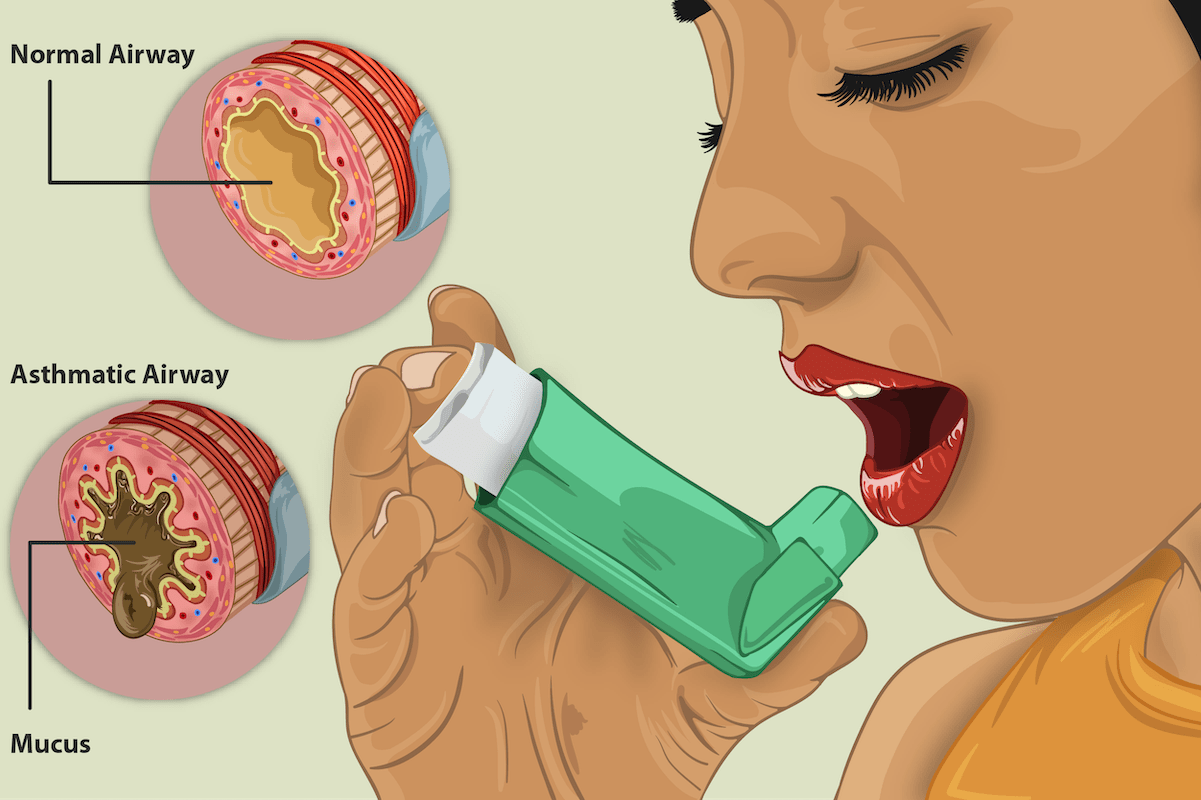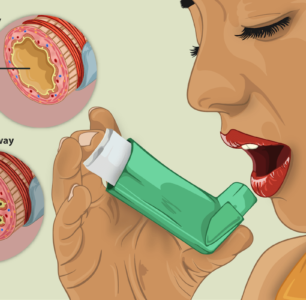Introduction
Asthma is a chronic respiratory condition that affects millions of people worldwide. It is a condition that causes the airways to narrow and become inflamed, making it difficult to breathe. The symptoms of asthma can range from mild to severe and can significantly impact an individual’s quality of life. Despite being a common condition, asthma can be dangerous and even life-threatening in some cases. However, with proper management and treatment, most people with asthma can lead full, healthy lives. In this chapter, we will explore everything you need to know about asthma, from its causes and symptoms to its treatment options.
For more information, check out the Asthma Society of Ireland
What is Asthma?
Asthma is a chronic respiratory condition that causes inflammation in the airways, making it difficult to breathe. This inflammation can cause the airways to narrow, making it harder for air to pass through. As a result, individuals with asthma may experience wheezing, coughing, chest tightness, and shortness of breath. These symptoms can range from mild to severe and may occur sporadically or be persistent.
What Causes Asthma?
The exact cause of asthma is unknown. However, researchers believe that a combination of genetic and environmental factors may play a role in the development of the condition. Some of the most common triggers of asthma include:
- Allergens: Substances that can trigger an allergic reaction, such as pollen, dust mites, and pet dander, can also trigger asthma symptoms.
- Irritants: Certain irritants, such as cigarette smoke, air pollution, and strong odors, can also trigger asthma symptoms.
- Infections: Respiratory infections, such as the common cold, can cause inflammation in the airways and trigger asthma symptoms.
- Exercise: Physical activity can also trigger asthma symptoms, particularly in individuals with exercise-induced asthma.
- Weather changes: Changes in temperature or humidity can also trigger asthma symptoms in some individuals.
Symptoms of Asthma
The symptoms of asthma can vary from person to person and may range from mild to severe. Some of the most common symptoms of asthma include:
- Wheezing: A whistling sound when breathing, particularly during exhalation.
- Coughing: A persistent cough, particularly at night or early in the morning.
- Chest tightness: A feeling of tightness or pressure in the chest.
- Shortness of breath: Difficulty breathing, particularly during physical activity or in response to triggers.
- Rapid breathing: Breathing faster than usual, particularly during an asthma attack.
Treatment for Asthma
While there is no cure for asthma, the condition can be effectively managed with the right treatment. The goal of asthma treatment is to control symptoms, prevent asthma attacks, and maintain normal lung function. There are several treatment options available for asthma, including:
- Medications: There are several medications available for asthma, including inhalers, which can help to reduce inflammation and open up the airways. Some common medications used to treat asthma include short-acting bronchodilators, long-acting bronchodilators, corticosteroids, and leukotriene modifiers.
- Allergy shots: For individuals with allergic asthma, allergy shots can help to reduce the severity and frequency of asthma symptoms by desensitizing the immune system to allergens.
- Lifestyle changes: Certain lifestyle changes can also help to manage asthma symptoms. For example, quitting smoking, avoiding triggers, and maintaining a healthy weight can all help to reduce the severity of asthma symptoms.
- Asthma action plan: An asthma action plan is a written plan that outlines what to do in case of an asthma attack. This plan typically includes steps to take at different levels of symptom severity, such as using an inhaler, taking medication, or seeking emergency medical attention.
- Breathing exercises: Breathing exercises can also help to manage asthma symptoms by improving lung function and reducing stress levels. Some common breathing exercises include pursed-lip breathing, diaphragmatic breathing, and belly breathing.
Preventing Asthma Attacks
Preventing asthma attacks is an important part of managing the condition. There are several steps you can take to reduce the risk of an asthma attack, including:
- Identifying triggers: Identifying and avoiding triggers is an important part of managing asthma. Keep a record of when and where symptoms occur, and try to avoid triggers as much as possible.
- Taking medication as prescribed: Taking medication as prescribed by your healthcare provider can help to prevent asthma attacks and control symptoms.
- Using a peak flow meter: A peak flow meter is a device that measures how much air you can exhale. Using a peak flow meter regularly can help to identify changes in lung function and prevent asthma attacks.
- Following an asthma action plan: Following an asthma action plan can help you to recognize and respond to asthma symptoms early, reducing the risk of an asthma attack.
Conclusion
Asthma is a chronic respiratory condition that can significantly impact an individual’s quality of life. While there is no cure for asthma, the condition can be effectively managed with the right treatment and lifestyle changes. It is important to work closely with your healthcare provider to develop an individualized treatment plan that addresses your specific symptoms and triggers. By taking control of your asthma and following an asthma action plan, you can reduce the frequency and severity of asthma attacks and maintain normal lung function.
How asthma changes with age
Asthma can change with age, and the symptoms and triggers of asthma may vary depending on an individual’s age. Here are some ways that asthma can change with age:
- Childhood asthma: Childhood asthma is one of the most common types of asthma, and it often develops before the age of 5. Children with asthma may experience symptoms such as coughing, wheezing, and shortness of breath. Triggers for childhood asthma may include respiratory infections, allergies, and exposure to irritants.
- Adult-onset asthma: While asthma is commonly associated with childhood, it can develop in adulthood as well. Adult-onset asthma is more common in women than in men, and it may be triggered by factors such as hormonal changes, stress, and exposure to environmental pollutants.
- Elderly asthma: Asthma can also affect older adults, and the symptoms of asthma may be more severe in this age group. Elderly individuals with asthma may be more prone to respiratory infections, and they may also experience other respiratory conditions such as chronic obstructive pulmonary disease (COPD) and pneumonia.
- Menopausal asthma: Menopause can be a trigger for asthma symptoms in some women, due to changes in hormones. Women may experience worsening of asthma symptoms during menopause, and they may require adjustments to their asthma treatment plan.
Overall, asthma can change with age, and it is important for individuals to work with their healthcare provider to manage their symptoms and adjust their treatment plan as needed. By staying proactive and informed, individuals with asthma can effectively manage their condition and maintain good respiratory health throughout their lives.
How asthma affects sports people and how to manage it
Asthma can be a significant challenge for sportspeople, as it can cause breathing difficulties and limit physical performance. However, with proper management and treatment, many sportspeople with asthma are able to participate fully in their sport. Here are some ways that asthma can affect sportspeople and how to manage it:
Exercise-induced asthma
Exercise-induced asthma is a type of asthma that is triggered by physical activity. Sportspeople with exercise-induced asthma may experience coughing, wheezing, and shortness of breath during and after exercise. To manage exercise-induced asthma, sportspeople can use an inhaler before exercise to open up their airways and reduce symptoms. They can also warm up slowly before exercise and stay hydrated to minimize symptoms.
Cold weather asthma
Cold, dry air can be a trigger for asthma symptoms, and sportspeople who exercise outdoors in cold weather may experience breathing difficulties. To manage cold weather asthma, sportspeople can wear a scarf or mask over their mouth and nose to warm and humidify the air they breathe. They can also use an inhaler before exercise to open up their airways and reduce symptoms.
Environmental triggers
Environmental triggers such as pollen, dust, and pollution can cause asthma symptoms in sportspeople. To manage environmental triggers, sportspeople can avoid exercising outdoors during high pollen or pollution times. They can also use an inhaler before exercise to open up their airways and reduce symptoms.
Medications
Sportspeople with asthma may need to use medications such as inhalers to manage their symptoms. It is important for sportspeople to work with their healthcare provider to develop an individualized treatment plan that addresses their specific symptoms and triggers. They should also ensure that they carry their inhaler with them during exercise and know how to use it properly.
Asthma action plan
Sportspeople with asthma should have an asthma action plan in place that outlines what to do in case of an asthma attack. This plan should include steps to take at different levels of symptom severity, such as using an inhaler, taking medication, or seeking emergency medical attention.
In summary, asthma can affect sportspeople by causing breathing difficulties and limiting physical performance. However, with proper management and treatment, many sportspeople with asthma are able to participate fully in their sport. It is important for sportspeople with asthma to work with their healthcare provider to develop an individualized treatment plan that addresses their specific symptoms and triggers, and to have an asthma action plan in place in case of an emergency. With the right strategies and support, sportspeople with asthma can manage their condition and achieve their athletic goals.

